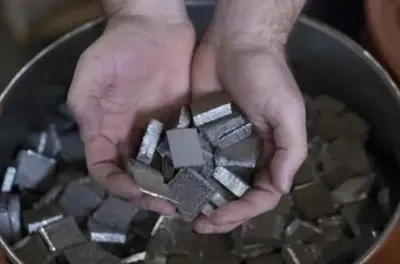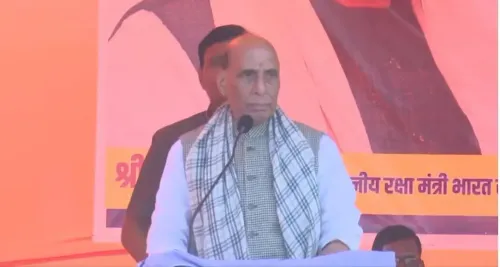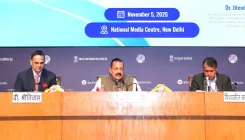Is India Set to Become a Key Player in a Democratic Rare-Earth Network?

Synopsis
Key Takeaways
- India's vast resources position it as a key player in the rare-earth market.
- Support from the US, Japan, Australia, and Brazil is crucial for India's rise.
- India's manufacturing capabilities can support downstream industries effectively.
- China's dominance poses risks, highlighting the need for diversification.
- India is taking steps to enhance its processing capacity and reduce reliance on China.
New Delhi, Nov 8 (NationPress) India’s ascent as a reliable supplier and processor, particularly with the support of the United States, Japan, Australia, and Brazil, could establish a diversified rare-earth market and enhance geopolitical stability, according to a recent report.
The report emphasizes that, unlike many emerging players in the rare earths sector, India offers both scale and credibility.
As highlighted in 'The Diplomat', India’s extensive manufacturing infrastructure has the capacity to support downstream industries such as magnets, motors, and batteries—areas where smaller producers like Australia and Brazil face challenges.
“The summit between US President Donald Trump and Chinese President Xi Jinping at APEC in Gyeongju did not yield a grand agreement, but one significant outcome was time. China consented to postpone the latest round of rare-earth export controls for a year, which the US feared could disrupt crucial supply chains in defense, clean energy, and semiconductors. Markets responded positively, interpreting this as a 'truce'. However, this pause only highlights the fragile nature of global reliance on China and the urgent need for diversification,” the report elaborated.
“For the last decade, China has held a near-monopoly over rare earth elements essential to the modern economy, controlling approximately 70% of global mining, over 90% of refining, and nearly all production of high-performance magnets vital for electric vehicles, wind turbines, and precision-guided munitions. As geopolitical tensions rise, Beijing’s capacity to weaponize this dominance becomes increasingly apparent,” it stated.
The report underscores that the one-year delay provides a crucial window for the United States and its allies to take action. The pressing question is who can swiftly establish credible alternatives, and increasingly, that answer appears to be India.
“New Delhi has long possessed the geological resources. India’s beach-sand deposits are rich in monazite, bastnaesite, and other rare-earth minerals, though the country's processing capacity and environmental regulations have historically lagged. This situation is evolving. In June, India announced negotiations with companies and a fiscal incentive plan for domestic rare-earth magnet manufacturing aimed at decreasing reliance on China,” the report noted.
“Indian firms such as Sona Comstar, already a significant global supplier for EV drivetrains, are establishing magnet production lines. State-owned Indian Rare Earths Ltd. is expanding its refining capabilities, and the Indian Space Research Organisation is adapting high-purity separation technology originally designed for satellite components,” it added.
The report concluded that with strong political commitment and an evolving technological ecosystem, India could soon emerge as the third pillar of a democratic rare-earth network—alongside the United States and Japan.









